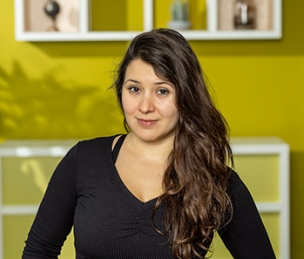Displaying 1 - 2 of 2
-
Raviv, L., & Arnon, I. (2016). The developmental trajectory of children's statistical learning abilities. In A. Papafragou, D. Grodner, D. Mirman, & J. Trueswell (
Eds. ), Proceedings of the 38th Annual Meeting of the Cognitive Science Society (CogSci 2016). Austin, TX: Cognitive Science Society (pp. 1469-1474). Austin, TX: Cognitive Science Society.Abstract
Infants, children and adults are capable of implicitly extracting regularities from their environment through statistical learning (SL). SL is present from early infancy and found across tasks and modalities, raising questions about the domain generality of SL. However, little is known about its’ developmental trajectory: Is SL fully developed capacity in infancy, or does it improve with age, like other cognitive skills? While SL is well established in infants and adults, only few studies have looked at SL across development with conflicting results: some find age-related improvements while others do not. Importantly, despite its postulated role in language learning, no study has examined the developmental trajectory of auditory SL throughout childhood. Here, we conduct a large-scale study of children's auditory SL across a wide age-range (5-12y, N=115). Results show that auditory SL does not change much across development. We discuss implications for modality-based differences in SL and for its role in language acquisition.Additional information
https://mindmodeling.org/cogsci2016/papers/0260/index.html -
Raviv, L., & Arnon, I. (2016). Language evolution in the lab: The case of child learners. In A. Papagrafou, D. Grodner, D. Mirman, & J. Trueswell (
Eds. ), Proceedings of the 38th Annual Meeting of the Cognitive Science Society (CogSci 2016). Austin, TX: Cognitive Science Society (pp. 1643-1648). Austin, TX: Cognitive Science Society.Abstract
Recent work suggests that cultural transmission can lead to the emergence of linguistic structure as speakers’ weak individual biases become amplified through iterated learning. However, to date, no published study has demonstrated a similar emergence of linguistic structure in children. This gap is problematic given that languages are mainly learned by children and that adults may bring existing linguistic biases to the task. Here, we conduct a large-scale study of iterated language learning in both children and adults, using a novel, child-friendly paradigm. The results show that while children make more mistakes overall, their languages become more learnable and show learnability biases similar to those of adults. Child languages did not show a significant increase in linguistic structure over time, but consistent mappings between meanings and signals did emerge on many occasions, as found with adults. This provides the first demonstration that cultural transmission affects the languages children and adults produce similarly.Additional information
https://mindmodeling.org/cogsci2016/papers/0289/index.html

Share this page